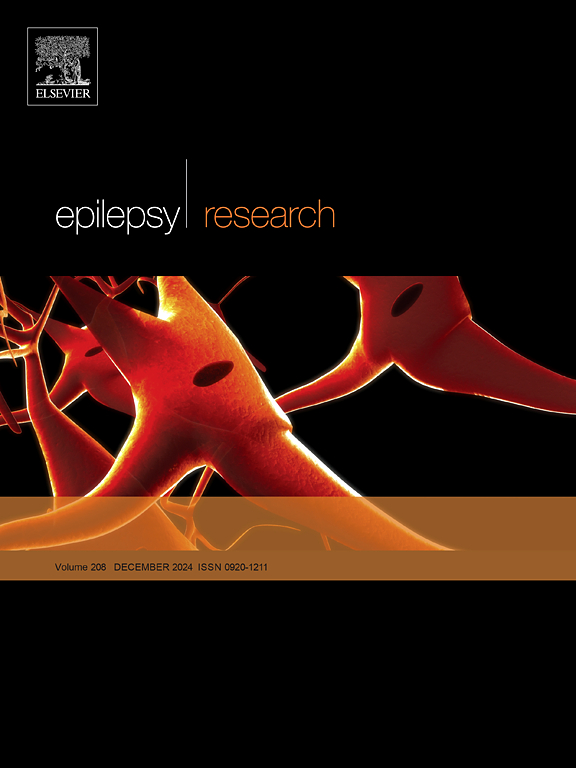Optimizing drug-resistant epilepsy identification in the Veterans Health Administration
IF 2
4区 医学
Q3 CLINICAL NEUROLOGY
引用次数: 0
Abstract
Background
Accurate identification of drug-resistant epilepsy (DRE) is crucial for accurate disease measurement, effective clinical intervention and improved patient outcomes. Prior attempts to define DRE in administrative data using the 2010 International League against Epilepsy (ILAE) criteria have faced complexities.
Methods
This retrospective study utilized national administrative data from the Veterans Health Administration (VHA) to identify patients with possible DRE. This was a multicenter national cohort that uses a common, non-commercial medical record system. A panel of six epileptologists conducted chart reviews to identify DRE using the 2010 ILAE criteria. Logistic regression was used to analyze epilepsy-related variables of interest to develop algorithms identifying DRE.
Results
Among 260 included patients, 93 (35.8 %) had DRE, 148 (56.9 %) did not have DRE, and 19 (7.3 %) were undetermined. Out of 96 algorithms assessed, the best-performing algorithm had a high accuracy (F1 score=0.726) and defined DRE as those on ≥ 3 ASMs in addition to those on ≥ 2 ASMs for ≥ 365 days with at least one intractable ICD code. The algorithm demonstrated high sensitivity (0.74), specificity (0.81), and area under the curve (AUC 0.78). Factors such as age, number of ASMs, EEG, and MRI procedures, and intractable epilepsy ICD codes were associated with DRE.
Discussion
Our optimal algorithm for DRE identification is like previously published algorithms that determined the importance of number and duration of ASMs. However, it differs in the particular combination of factors that best identified DRE. These differences highlight the importance of fine-tuning algorithms for specific care settings. Further validation in a larger, more heterogenous cohort are needed to determine our algorithm's applicability and potential impact.
在退伍军人健康管理局优化耐药性癫痫鉴定
背景:准确识别耐药癫痫(drug-resistant epilepsy, DRE)对于准确的疾病测量、有效的临床干预和改善患者预后至关重要。先前使用2010年国际抗癫痫联盟(ILAE)标准在行政数据中定义DRE的尝试面临着复杂性。方法本回顾性研究利用退伍军人健康管理局(VHA)的国家管理数据来识别可能的DRE患者。这是一个多中心的国家队列,使用一个共同的,非商业医疗记录系统。一个由六名癫痫学家组成的小组进行了图表审查,以使用2010年ILAE标准确定DRE。逻辑回归用于分析癫痫相关变量,以开发识别DRE的算法。结果纳入的260例患者中,93例(35.8 %)有DRE, 148例(56.9 %)无DRE, 19例(7.3 %)不确定。在评估的96种算法中,表现最好的算法具有较高的准确性(F1得分=0.726),并将DRE定义为≥ 3个asm以及≥ 2个asm≥ 365天且至少有一个难治性ICD代码的患者。该算法具有较高的灵敏度(0.74)、特异性(0.81)和曲线下面积(AUC)(0.78)。年龄、痉挛次数、脑电图和MRI检查以及顽固性癫痫ICD编码等因素与DRE相关。我们用于DRE识别的最佳算法与先前发表的确定asm数量和持续时间重要性的算法类似。然而,在确定DRE的特定因素组合方面有所不同。这些差异突出了微调算法对特定护理设置的重要性。需要在更大、更异质的队列中进行进一步验证,以确定我们的算法的适用性和潜在影响。
本文章由计算机程序翻译,如有差异,请以英文原文为准。
求助全文
约1分钟内获得全文
求助全文
来源期刊

Epilepsy Research
医学-临床神经学
CiteScore
0.10
自引率
4.50%
发文量
143
审稿时长
62 days
期刊介绍:
Epilepsy Research provides for publication of high quality articles in both basic and clinical epilepsy research, with a special emphasis on translational research that ultimately relates to epilepsy as a human condition. The journal is intended to provide a forum for reporting the best and most rigorous epilepsy research from all disciplines ranging from biophysics and molecular biology to epidemiological and psychosocial research. As such the journal will publish original papers relevant to epilepsy from any scientific discipline and also studies of a multidisciplinary nature. Clinical and experimental research papers adopting fresh conceptual approaches to the study of epilepsy and its treatment are encouraged. The overriding criteria for publication are novelty, significant clinical or experimental relevance, and interest to a multidisciplinary audience in the broad arena of epilepsy. Review articles focused on any topic of epilepsy research will also be considered, but only if they present an exceptionally clear synthesis of current knowledge and future directions of a research area, based on a critical assessment of the available data or on hypotheses that are likely to stimulate more critical thinking and further advances in an area of epilepsy research.
 求助内容:
求助内容: 应助结果提醒方式:
应助结果提醒方式:


